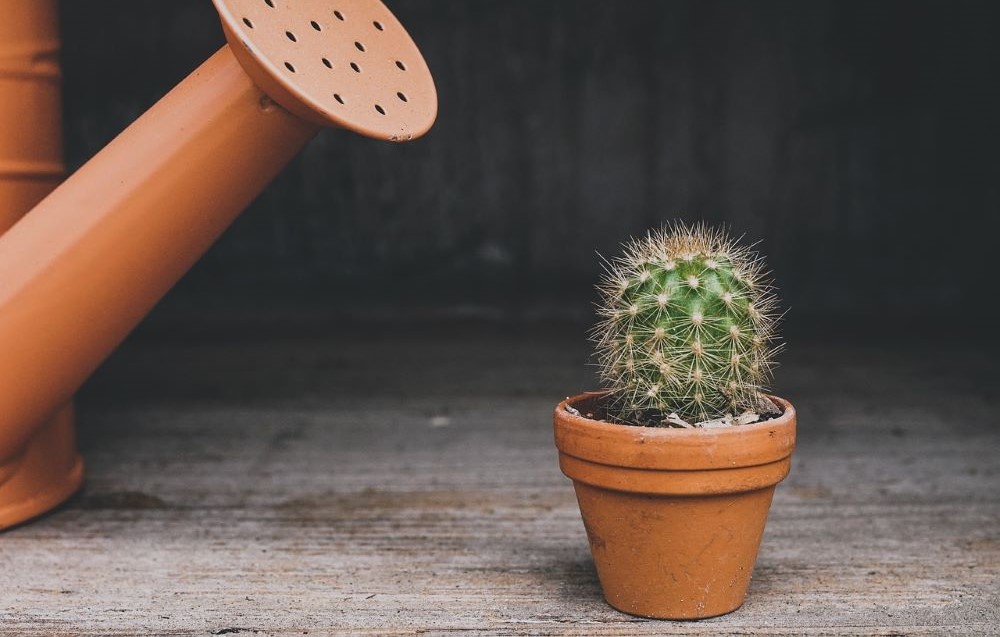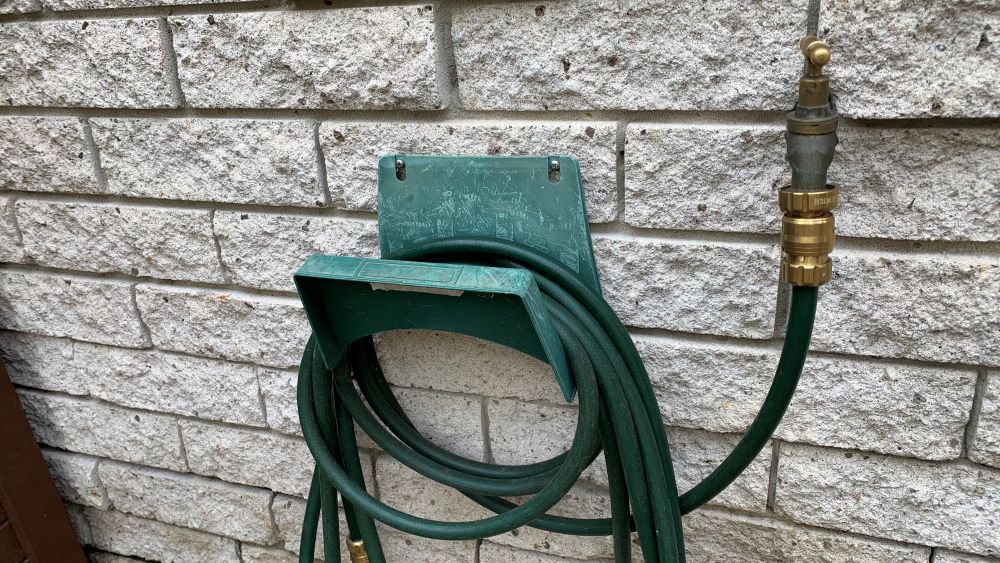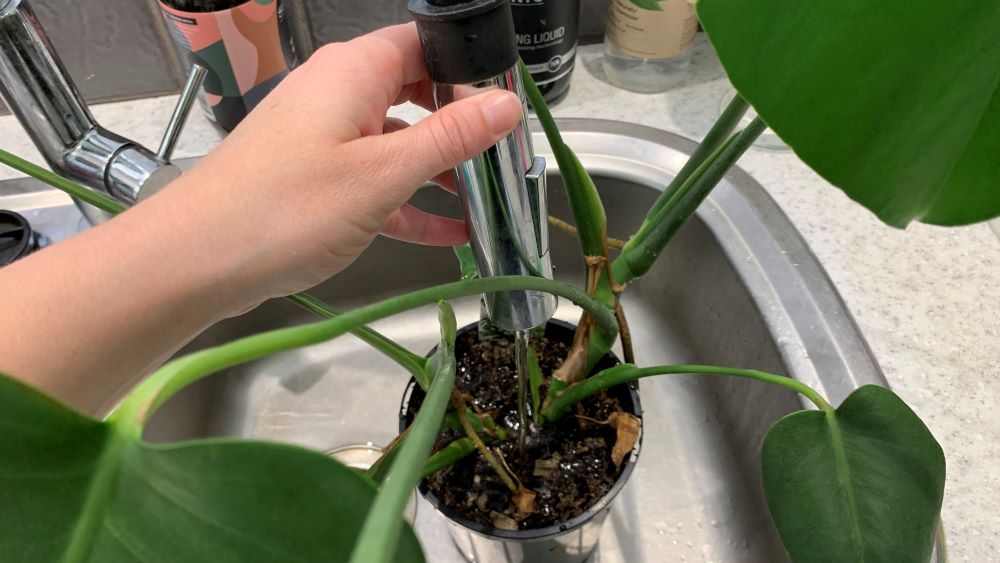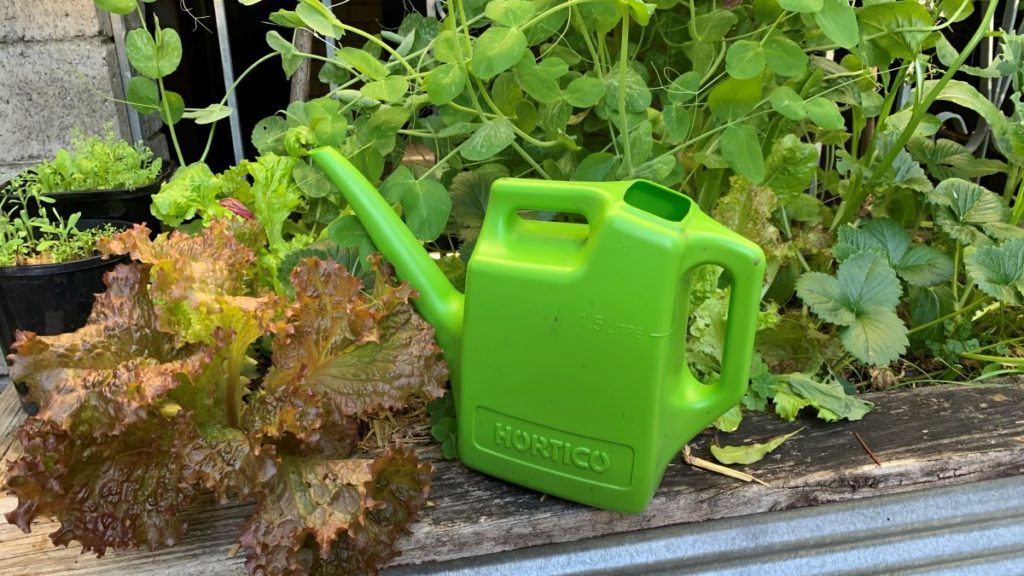Watering plants with hot water can risk burning the leaves, stems and roots. Hot water can damage the plant and stop it from absorbing water and nutrients. In winter you can water indoor plants with slightly warm water. Watering indoor plants with very cold water can slow their growth even further.
This article will explore the affect of hot water on plants and when you can use warm water for better winter plant growth. I will also go through some tips for saving a plant that has been accidentally watered with hot water.

What to do if you accidentally water your plants with hot water
There are some things you can do for your plant if you accidentally water them with hot water. This can happen if you are using an outdoor hose during summer and there is hot water sitting in the hose. This can also happen if you have been using hot water indoors and you forget to change it over.
Here are my easy steps to save your plant if you accidentally put hot water on them.
1. Wash the hot water through with cold
If you have accidentally watered your outdoor plants with your hose it is important to stop adding the hot water and let the hose run. Allow the hot water to run all the way out of the hose first. Add a sprayer nozzle to your hose and set it on the shower setting.
Spray your plants with some cold water through the sprayer nozzle to quickly remove the hot water from the leaves. Water the base of the plant with the hose to wash the hot water through the soil. This will help to save your outdoor plants from a dose of hot water.

2. Water indoor plants under your faucet
If you have accidentally run hot water from your faucet onto your plants then it is important to quickly wash it through with cool water. Place the pot under your tap in the sink and run cold water through the soil. If there is hot water on the leaves, wash this off with the faucet as well.

How to avoid putting hot water on your plants
There are a few main ways where hot water can accidentally get onto your plants. The top reason is using an outdoor hose that has been sitting in the sun. The water sitting in the hose can heat up rapidly and if you put it straight on the plant, it can cause damage.
Leaving water sitting in a watering can outside in the sun can also cause the water to heat up quickly. Another way that hot water can end up on your plants accidentally is when watering with your indoor faucet. If you have previously run hot water, it can stay in the pipes and come out when you water your plants.
There are a few easy tips to follow to avoid putting hot water on your plants. No plants love hot water so try these easy steps to avoid it happening to you.
1. Let the hose run through before watering
The first tip is to always let your outdoor hose run for a few seconds before testing the water and putting it on your plants. Hoses that have been left in the full sun in spring or summer can heat up quickly. The hot water in the hose can get scorching hot and cause damage to your plants.
In summer I will always run my hose for at least 10 seconds before I test the water temperature with my hand. Take care when doing this your hose can heat up rapidly and the water can burn. Make sure you feel the coolness coming through the hose before testing it carefully with a finger.
Once the water feels cool, go ahead and water your outdoor plants.
Watering in the morning is best as the hose will be cool from the overnight temperatures. Watering in the morning will also help your plants to survive a hot summers day.
2. Always test your indoor water first
For indoor plants it is easy to take your plant over to the sink and water straight from the faucet. Before you do this, allow the water to run through first on cold to make sure that there is no hot water sitting in the pipes.
Hot water will stay in the pipes for a long time on a warm day so always check the water temperature first. Run the tap for 10 seconds on cold and only water your plant when the temperature is cool.
3. Empty your watering can every time
Always empty the water out of your watering can at the end of the day or after your watering session. Any water left in the watering can will heat up in the sun. If this hot water is put on the plants it will burn the leaves and damage the roots.

How to use warm water on plants
Indoor plants will benefit from water that is slightly above the outdoor cold winter temperatures. Water from the pipes will be very cold over the winter so adding tepid or room temperature water is ideal.
The easiest way to do this is to fill a small watering can with water and leave it on the bench for a few hours. This will increase the temperature of the water so it matches the room temperature.
Very cold water can shock the plant and cause its growth to slow even more.
Watering Plants with Hot Water | Summary
Plants should not be watered with hot water because it can cause leaf, stem and root damage. Very hot water can also kill off good soil bacteria which help to break down organic material and release nutrients for your plants. Always water outdoor plants with cool water and indoor plants will grow best with room temperature water.
Happy growing.
I am an accredited practicing dietitian, experienced gardener and a dedicated cook. I love writing and sharing my experience so you can learn from my successes and mistakes.
